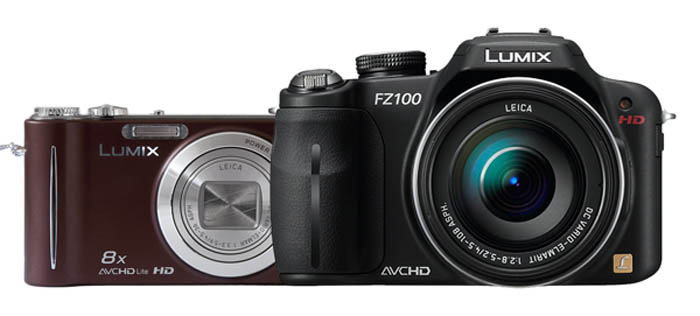Digital cameras fall into one of four categories. Each is designed with a specific type of use in mind, with specific advantages and disadvantages. Let's focus on each in turn...

1. Compacts
These are smaller, lighter, thinner and fit into your pocket! You can operate them one-handed and easily shoot from a range of different angles. They are well suited to family snaps and indoor scenes with good lighting.
Features:
- Rear screen viewfinder. Few compacts have an actual viewfinder, and for those that do, they are generally electronic (some high-end models do have an optical viewfinder).
- Mid-range zoom (3x or 4x). Some models offer greater zoom (e.g. 8x or 10x). Note that in the wide angle position, the zoom rarely goes wider than 28mm (or equivalent), giving a viewing angle of 75°. This means they are of limited use for group photos in confined spaces.
- Built-in flash. Only high-end models are likely to allow an external flash to be fitted.
- Degraded image quality from ISO 400 upwards: avoid using high ISO settings.
- Slow shutter response time, but variable depending on the model in question.
- Warning: not very hard-wearing!
2. Bridge cameras
Bridge cameras, as the name suggests, "bridge" the gap between compact cameras, generally the preserve of beginners, and SLRs, which are generally aimed at serious hobbyists and professionals. They are suitable for most scenarios, but limited in the case of sports pictures and action shots.
- They are a little larger and heavier than compact cameras, giving increased stability when shooting with low shutter speeds.
- They have smaller grips, making them comfortable to hold.
- Easy configuration (with semi-auto and manual modes) via an accessible dial located near to the shutter release button.
- Wider viewfinder (optical or electronic), letting you adopt the optimum body position for shooting, with your elbows tucked in and the camera held up to your eye.
- Built-in flash, with some models having the facility to connect an external flash (of the same brand).
- Image quality often a key feature even at high ISO sensitivity settings (up to 800-1000 ISO).
- Better lens, with high power zoom (min 10x).

3. SLRs
For keen hobbyists and professionals looking for better image quality, sturdiness, reliability and optimum handling. SLRs are heavier and bulkier, but offer a host of features...
- Interchangeable lenses, which are the main determining factor when it comes to image quality. Pick lenses with different focal lengths to suit the type of picture you wish to take (macro, landscape, portrait, sports, wildlife, astronomy, etc.).
- Optical viewfinder.
- Instant shutter response: take bursts of 3-10 pictures per second depending on the model in question.1 thumb dial on entry level SLRs, letting you control one parameter. This must be used in combination with another button to control the second parameter.
- 2 dials on professional and semi-pro models: direct control of key shooting parameters.
A number of accessories can be connected to the camera: extra grip for vertical shots, remote controls, cobra flashes, Wi-Fi modules, audio or optical shutter controls, etc.
4. Rangefinder ("telemeter") cameras
These have a viewfinder system next to the lens, meaning that two superimposed images are visible in the viewfinder. The image is focused in the area where the two images coincide. These models offer a superior build and lens quality, with a price to match. Perfect for professional photographers shooting urban scenes, landscapes and portraits.
- Interchangeable lenses with a maximum 90mm focal length.
- Manual focus only.
- Minimum shutter vibration, giving sharp pictures even at slow shutter speeds.
- Viewfinder not obscured during exposure, allowing continuous tracking of the subject.
Recommended product:
Digital Premium High Gloss
